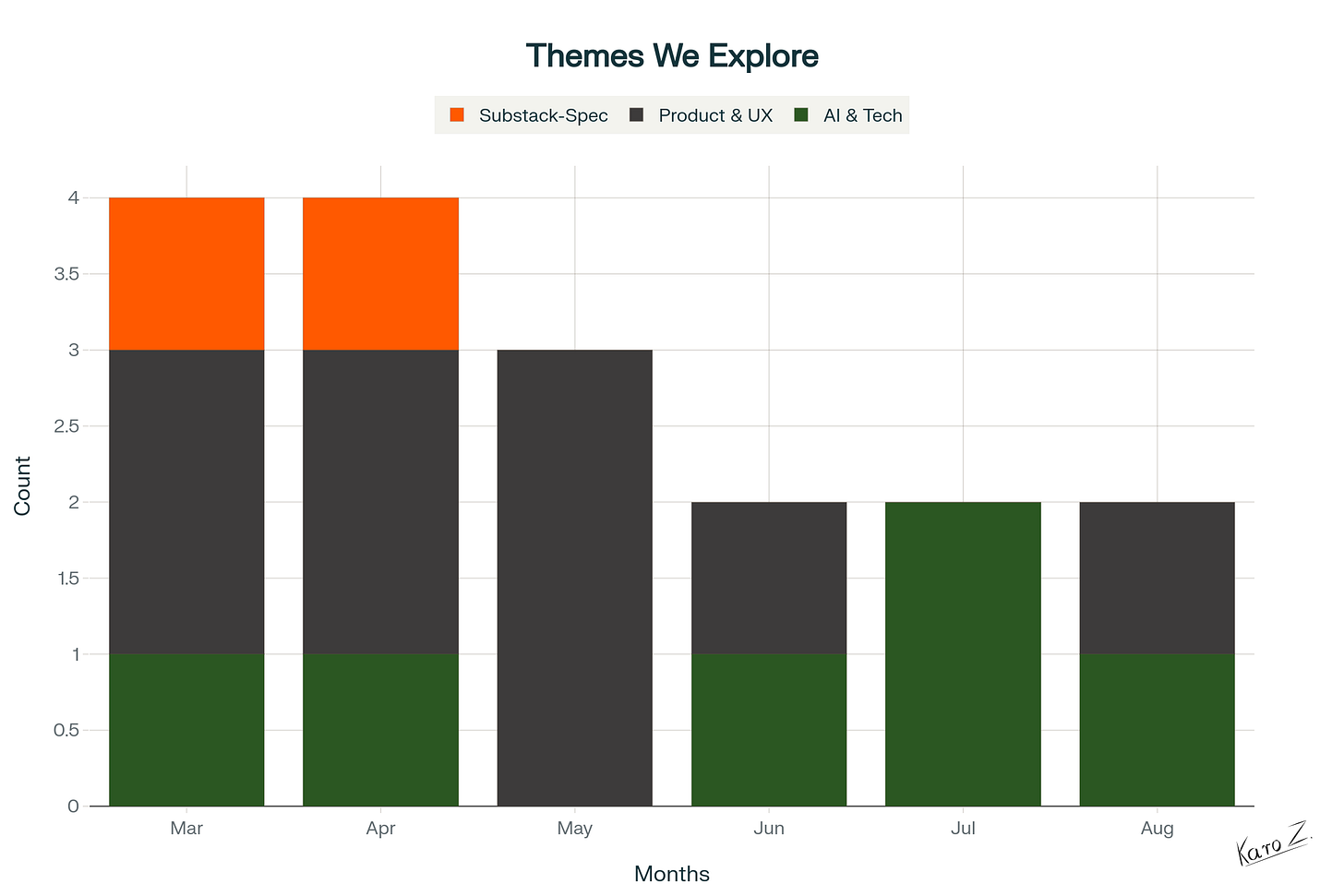I Analyzed Every Interaction From My First 6 Months on Substack - Here’s What Drove My Rapid Growth
Welcome to this special edition of Product with Attitude. Free members can enjoy the first part now - and unlock the rest anytime. 🎁 Paid members get the full post and a gift.
It’s wild to think that 6 months ago Product With Attitude didn’t even exist.
No community. No coffee chats. No StackShelf.
I had no idea how many brilliant people treat Substack like home. Or how much I needed a place where I could write exactly how I talk aaaand have it land.
I started at 0 followers (see my piece on why that was a blessing in disguise).
Yes, I pushed hard, but the growth still caught me off guard.
This week, I went full data nerd and built a Python script to measure the impact of every interaction I’ve had on Substack (DMs excluded).
Quick Stats
This week: 2.1K+ subscribers and ranked #63 in Rising in Technology
Past 7 weeks: Consistently featured in Rising in Technology, peaking at #19 and never dropping below #87
It’s almost cliché to say I couldn’t do it without you — but this time, I’ve got the data to prove it
My growth on Substack would look completely different if:
No one had ever recommended my publication - 712 subscribers came from recommendations alone (!)
People like
, , , , hadn’t consistently restacked my posts (full analysis below)- hadn’t bought me my first-ever digital coffee - the real mental pick-me-up
- and hadn’t been so relentlessly encouraging
I hadn’t been manically reading everything
has writtenI hadn’t attended
’s workshop - one hour with David helped me finally nail my positioning- hadn’t introduced me to other women in tech
I hadn’t been using
’s Writestack to schedule some of my Notes (it can get overwhelming, don’t you think?)
Before we get into what worked, here’s what didn’t — maybe it’ll save you some time.
What Didn’t Work
1. Rigid posting schedule
I tried publishing on the same day every week, I reaaaaally did. It just didn’t work.
I’m not as productive as the real, full-time writers, and my perfectionism won’t let me hit publish if I’m not happy with a piece.
The data below confirms it: for me, a rigid schedule didn’t just fail to help — it hurt.
Posting consistently matters, but there’s value in betting on quality and leaving yourself some wiggle room.
2. Cross-posting on social media
I’m rubbish at it. I said no to TikTok for ethical reasons, and my Instagram, Bluesky, and Twitter are basically abandoned.
Maybe their algorithms have figured out I prefer Substack and now punish me for it, which seems petty but also fair. From what I know rocks social media, we should probably learn from him.
3. Cross-posting on Medium
I’m 100% doing something wrong here. I get zero traction there - not low, not modest, but zero.
Every time I posted, Medium ignored me a little louder, so I just stopped.
But I know and get great results there, so if you want to grow, don’t make my mistake of starting from scratch without talking to them first.
What Worked
The Content Themes That Drive Growth

When I break down my top-performing posts, three themes keep bubbling to the surface, and each one pulls in readers for a different reason:
1. Substack-Specific Content
For obvious reasons, this topic is relevant for everyone. And it shows:
Highest viral potential
Highest engagement rate: 0.84 comments per like
Example: My analysis of Substack’s roadmap is still getting restacks months later.
2. Practical AI/Product Content
I write about AI and product because it’s my background, my sandbox, and my obsession.
I suspect readers show up for this category partly because it’s a hot topic, and partly because what I share is both practical (systems to use right away) and insider (the kind of lessons you usually only hear in product team meetings).
High viral potential
High engagement rate: 0.53 comments per like
Example: Self-Improving Prompt System
3. Product, UX & Ethics
Slower burn, smaller audience, except when it hits a nerve.
Lowest overall performance… with the exception of this very post about user personas.
Nothing in these stats is particularly surprising. Let’s dig deeper.
The Two Hidden Engines
I’ve suspected it for a while, but the numbers make it undeniable:


